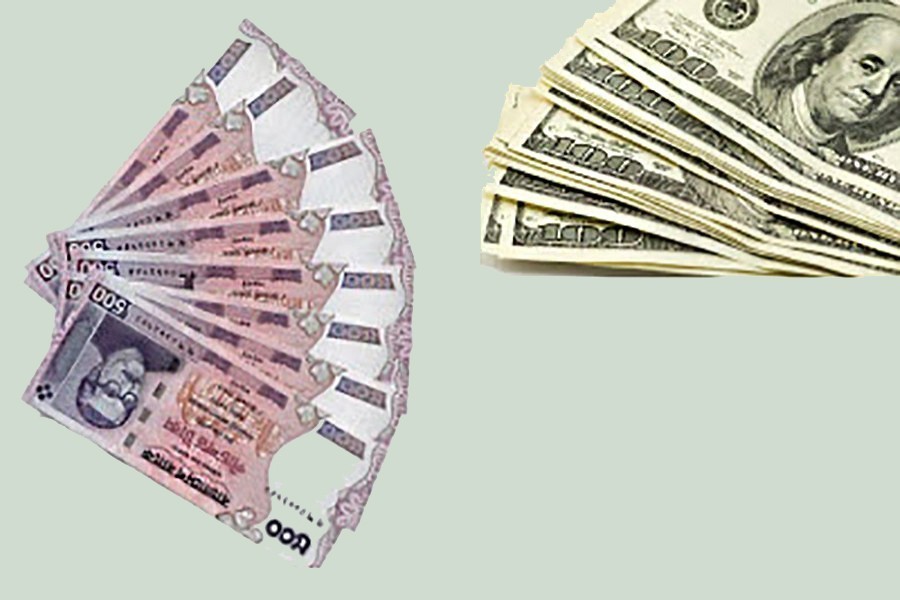
Published :
Updated :

The Bangladesh Taka (BDT) keeps depreciating significantly against the US dollar as higher demand for the greenback for settling import-payment obligations outweighs forex inflow, sources say.
The local currency lost its value by 20 poisha on the interbank foreign-exchange market on Thursday in such a steep fall nearly after two months, according to market operators.
On the day, the dollar was quoted ever-highest at Tk 86.00 each on the inter-bank market against Tk 85.80 of the previous working day. It was Tk 85.75 on November 09 last.
The exchange rate of the local currency also depreciated similarly against the dollar at the customer level for settling import payments.
One dollar claimed maximum Tk 86.05 for sale of bills for collection, generally known as BC, on the day against Tk 85.85 of the previous level, they added.
On the other hand, the banks quoted dollar at around Tk 85.05 on the day against Tk 84.85 of the previous working day to the remitters for telegraphic transfer (TT) clean of their funds.
"The local currency depreciated Thursday against the US dollar on the basis of market demand," a senior official of Bangladesh Bank (BB) told the FE on Sunday.
He also says to offset the dollar crunch the central bank is providing its foreign-currency liquidity support to the banks to settle their import-payment obligations.
As part of the moves, the central bank has so far sold more than $2.50 billion from the reserves directly to the commercial banks as liquidity support for settling their import-payment obligations in the current fiscal year (FY), 2021-22.
The BDT's latest depreciation came against the backdrop of higher outflow of foreign exchange mainly due to the 'hefty growth' in import- payment obligations than inflow in recent days, the market operators added.
Bangladesh's actual import in terms of settlement of letters of credit (LCs) jumped by 53.74 per cent to $30.32 billion during the July-November period of FY'22 from $19.72 billion in the same period of the previous fiscal year.
They also said lower inflow of remittances also pushed up pressure on the country's foreign-exchange market recently.
Meanwhile, the flow of inward remittance dropped more than 20 per cent to $10.24 billion during the July-December period of FY'22 from $ 12.94 billion in the same period of FY'21.
"The exchange rate of local currency against the greenback is still facing a pressure mainly due to higher import-payment obligations, particularly for petroleum products, intermediate goods and industrial raw materials," a senior treasury official of a leading private commercial bank told the FE.
He also says the latest fall of the local currency would help in export earnings as well as the flow of inward remittances.
"But import cost will also go up slightly that may fuel inflationary pressure on the economy," the private banker noted.


 For all latest news, follow The Financial Express Google News channel.
For all latest news, follow The Financial Express Google News channel.